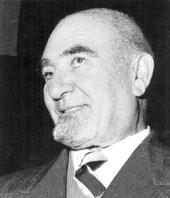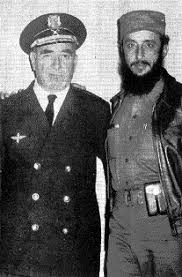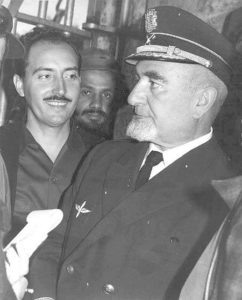 ALBERTO BAYO GIROUD, GENERAL ESPAÑOL, COMANDANTE CUBANO. (NACIDO EN CAMAGUEY).
ALBERTO BAYO GIROUD, GENERAL ESPAÑOL, COMANDANTE CUBANO. (NACIDO EN CAMAGUEY).
Alberto Bayo Giroud was born in Camagüey, Cuba (then General Captaincy of Cuba) on March 27, 1892, son of a Spanish Officer and a Camagüeyana mother.
Bayo was a Cuban-Spanish military man and aviator who participated in the Spanish Civil War and, later, as an instructor in the Cuban Revolution, who overthrew Fulgencio Batista’s dictatorship and took Fidel Castro to power. He was also a poet and essayist.
Educated in the United States, in his youth he joined the Spanish Military Aviation, debuting as a pilot in 1916. Expelled from the Aviation for a duel, he was forced to the Spanish Legion in 1924, participating in the Moroccan War for two years in command Of a company. In 1925 he was seriously injured in the groin, spending a year in recovery. In 1926 he requested to return to Africa where he was assigned to be part of the troops of General Capaz, taking part in heavy fighting until 1927. At this time he joined the Republican Antifascist Military Union (UMRA).
When taking place the coup d’etat that gave beginning to the Civil War, still had the rank of captain of aviation and infantry, with destiny in the military aerodrome of the Prat of Llobregat (Barcelona). He remained loyal to the Republican Government and was in charge of directing the occupation of Ibiza and Formentera (August 8-9) and the Landing of Mallorca (in the hands of the insurgents) on August 16, 1936, where he suffered the defeat of his troops.
After the conflict ended in 1939, he went into exile in Mexico and was a professor at the Aviation School of Guadalajara. In 1947, he was part -as adviser of strategic matters- of the “Legion of the Caribbean”, founded in Guatemala and whose main purpose was to overthrow the regimes of Trujillo in the Dominican Republic and Somoza in Nicaragua. In Costa Rica, he trains the people of Rosendo Argüello who are about to invade Nicaragua.
Installed in Mexico, he was in charge of a chair at the Military Aviation School of Guadalajara and owner of a furniture factory. It is in Mexico where he meets Fidel Castro and some of his colleagues. This is the story of Bayo’s first encounter with Castro: “One day in July 1955, a 29-year-old man, tall and wearing glasses, stands in front of number 67 of the Country Club avenue in Mexico City. He does not personally know the person who lives there, but he is accompanied by a common friend, Saviur Cancio Peña, who knocks on the door and who, when the owner of the house opens, presents them: General Alberto Bayo, this is Fidel Castro. and he wants to meet him, there begins his adventure in favor of what would be after the Cuban Revolution.
In the Mexican country he was one of the military instructors of the Cuban guerrillas of the 26 de Julio Movement, in the El Chalco farm. Bayo has turned sixty years old when his meeting with Fidel Castro takes place and after liquidating his business, the old officer dedicates himself body and soul to the formation of the guerrilla group that will be known as “Los 82”.
According to one of his published books, on November 25, 1955, observing how the boat “Granma” that carries the members of the trained troop, and this moves away from the coast, Bayo feels dying. However, the day he knows the final victory of the “bearded” on January 1, 1959, fears for his health: “The morning of today, when I received the news, I was so impressed that I was forced to rest a long time. My heart leaped in my chest. I could not help it.
Bayo was not part of the triumphant Cuban Revolution in 1959, and presumably returned home at that time in Mexico.
At the triumph of the revolution he moved to Cuba where he died on August 4, 1967 in Havana with the rank of commander, the highest ranking of the Cuban army, but always wearing the insignia of Aviation of the Second Spanish Republic on his uniform.
 ALBERTO BAYO GIROUD, GENERAL ESPANOL, COMANDANTE CUBANO (NACIDO EN CAMAGÜEY).
ALBERTO BAYO GIROUD, GENERAL ESPANOL, COMANDANTE CUBANO (NACIDO EN CAMAGÜEY).
Alberto Bayo Giroud nació en Camagüey, Cuba (entonces Capitanía General de Cuba) un 27 de marzo de 1892, hijo de un Oficial Español y una madre Camagüeyana.
Bayo fue un militar y aviador hispano cubano que participó en la Guerra Civil Española y, posteriormente, como instructor, en la Revolución Cubana, que derrocó la dictadura de Fulgencio Batista y llevó a Fidel Castro al poder. Fue también poeta y ensayista.
Educado en los Estados Unidos, en su juventud ingresó en la Aviación Militar Española, estrenándose como piloto en 1916. Expulsado de la Aviación por un duelo, pasó forzoso a la Legión Española en 1924, participando en la Guerra de Marruecos durante dos años al mando de una compañía. En 1925 fue herido de gravedad en la ingle, pasando un año en recuperación. En 1926 solicitó volver a África donde se le asignó formar parte de las tropas del general Capaz, tomando parte en fuertes combates hasta 1927. En esta época se afilió a la Unión Militar Republicana Antifascista (UMRA).
Al producirse el golpe de Estado que dio inicio a la Guerra Civil, aún tenía el grado de capitán de aviación e infantería, con destino en el aeródromo militar de El Prat de Llobregat (Barcelona). Permaneció leal al Gobierno republicano y fue el encargado de dirigir la ocupación de Ibiza y Formentera (8-9 de agosto) y el Desembarco de Mallorca (en poder de los sublevados) el 16 de agosto de 1936 donde sufrió la derrota de sus tropas.
Tras finalizar el conflicto en 1939, se exilió en México y fue profesor de la Escuela de Aviación de Guadalajara. En 1947, forma parte –como asesor de asuntos estratégicos– de la “Legión del Caribe”, fundada en Guatemala y cuyo principal propósito era derrocar los regímenes de Trujillo en la República Dominicana y de Somoza en Nicaragua. En Costa Rica, entrena a la gente de Rosendo Argüello que se dispone a invadir Nicaragua.
Instalado en Méjico, tuvo a su cargo una cátedra en la Escuela de Aviación Militar de Guadalajara y dueño de una fábrica de muebles. Es en México donde conoce a Fidel Castro y algunos de sus compañeros. Así es relatado el primer encuentro de Bayo con Castro: “Un día del mes de julio de 1955, un joven de 29 años, alto y con gafas, se planta frente al número 67 de la avenida Country Club de México D.F. Personalmente no conoce a la persona que allí vive, pero le acompaña un amigo común, Saviur Cancio Peña, que llama a la puerta y que, cuando abre el dueño de la casa, los presenta : General Alberto Bayo, este es Fidel Castro. Acaba de llegar de Cuba y desea conocerle; allí comienza su aventura a favor de la que seria después la Revolución Cubana.
En el país mexicano fue uno de los instructores militares de los guerrilleros cubanos del Movimiento 26 de Julio, en la finca El Chalco. Bayo ha cumplido los sesenta años cuando tiene lugar su encuentro con Fidel Castro y tras liquidar sus negocios, el viejo oficial se dedica en cuerpo y alma a la formación del grupo guerrillero que será conocido con el nombre de “Los 82”.
Según relata en uno de sus libros publicados, el 25 de noviembre de 1955, al observar cómo la embarcación “Granma” que lleva a los integrantes de la tropa entrenada, y esta se aleja de la costa, Bayo se siente morir. Sin embargo, el día que conoce la victoria final de los “barbudos”, el 1 de enero de 1959, teme por su salud : “La mañana de hoy, cuando me dieron la noticia, me impresioné de tal manera que me vi precisado a descansar largo rato. El corazón me saltaba en el pecho. No podía evitarlo.
Bayo no formó parte de la Revolución Cubana triunfante en 1959, y presumiblemente regreso a su hogar en aquellos momentos en Mexico.
Al triunfo de la revolución se traslada a Cuba donde muere el 4 de agosto de 1967 en la Habana con el grado de comandante, la más alta graduación del ejército cubano, pero siempre usando en su uniforme las insignias de Aviación de la Segunda República Española.
Agencies/Wiki/Various/Internet Photos/Arnoldo Varona/ TheCubanHistory.com
THE CUBAN HISTORY, HOLLYWOOD.









